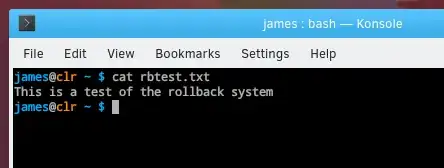I am confused about how ZFS snapshots and rollback are supposed to work. I have a zpool containing a couple zvols (each made from partitions of a mirrorvdev). I make a snapshot like this:
~$ sudo zfs snapshot nvme-tank@roll_test
Then I boot a VM located on one of the zvols in the zpool and create a test file
~$ echo "This is a test of the rollback system" > rbtest.txt
Then I shut down the VM and do the rollback. As I understand the concept, the rollback should revert everything in nvme-tank to the state it was when I took the snapshot, before making rbtest.txt.
~$ sudo zfs rollback nvme-tank@roll_test
I then reboot the vm, check for rbtest.txt, and there it is, still there!

The snapshot is there:
~$ zfs list -t all -r nvme-tank
NAME USED AVAIL REFER MOUNTPOINT
nvme-tank 887G 12.1G 24K /media/nvme-tank
nvme-tank@nov82018 0B - 24K -
nvme-tank@roll_test 0B - 24K -
nvme-tank/ext4-zvol 474G 449G 37.8G -
nvme-tank/ntfs-zvol 413G 23.9G 401G -
So, am I misunderstanding what snapshots are supposed to do, using them incorrectly, or is something broken with my zfs?